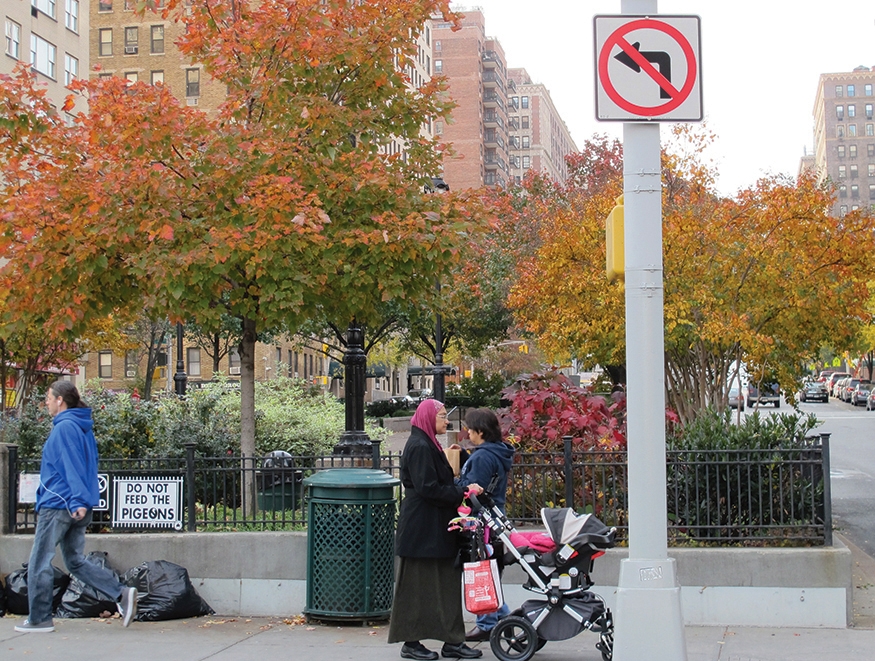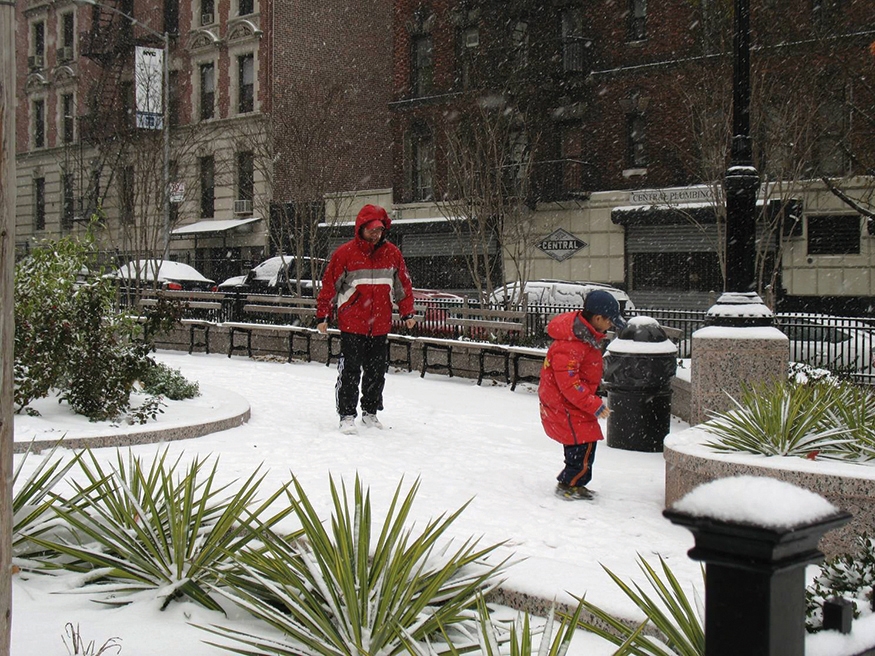A wide median that allows for pedestrian use and circulation in addition to plantings. Pedestrian malls, like the Allen Street Malls or the Park Avenue Mall at East 97th Street in Manhattan, provide a safe area for pedestrian use within the roadway. Typically, these malls are Parks property and are maintained by Parks or by neighborhood groups through a maintenance agreement.


Benefits
See benefits for Raised Median (Curb Height)
Considerations
- Allow adequate room for trucks and buses to make necessary turns without damaging plant material
- Consider environmental and physical stresses plants must withstand, including drought/inundation, sun/shade, heat/cold, wind, pollution, road salt, garbage, vehicular damage, and compaction
- Consider the lifespan and longevity of species, as plant replacement may be difficult and costly
- Consider how maintenance workers will access the plantings to perform regular maintenance activities, especially watering
- Consider pedestrian and bicycle circulation within the mall
- Consider how the planting design will function with other elements, such as seating, bike racks, wayfinding, lighting, and artwork
- Consider the collection of stormwater. See Stormwater Management Practices
- In cases where the pedestrian mall is not Parks property or is not being maintained by the city, plantings, excluding trees, require a maintenance agreement
Design
See Raised Median in the Geometry chapter for geometric design guidance; all medians must include a paved area, free of vegetation or obstructions, for pedestrians to safely cross at the intersection
Where planting trees, see design guidance for Tree Bed
- Adequate access should be provided throughout the mall; planting areas should be designed to accommodate necessary circulation. A minimum of 8 feet must be provided for a pedestrian-only path, 8 feet for a two-way bicycle path, and 12 – 14 feet, depending on the volume of users, for a shared-use path
- Provide a minimum 24 inches depth of high-quality, well-draining soil; 30 – 36 inches is optimal – see Soils in General Guidelines
- Positive drainage below the planting soil is essential. Any impermeable layers of concrete or asphalt must be removed or appropriately designed weep holes included
- Where conditions allow, medians should be planted with large-growing canopy trees
- Tree spacing should be based on the appropriate mature width of the species chosen and must be approved by Parks
- Minimum distance from the curb at the end of the median to the center of the tree trunk is 35 feet
- Where truck and bus traffic is heavy, consider using columnar species to reduce damage to plants
- Consider planting fewer understory species to provide continuity and reduce overall maintenance needs; select plants that will provide year-round ornamental interest
- Use drought-tolerant, salt-tolerant species that require little to no pruning or deadheading to maintain their shape, size, vitality, and ornamental interest
- Plant densely to discourage weed growth and pedestrian access through the plantings, however, do not overcrowd, which can lead to poor air circulation and encourage the spread of pest and disease problems
- Consider the use of tree-bed guards around planting areas to discourage trampling of plant material
Plants
See Plant Finder

Strategic tree and plant selection allows for year-round interest. Early flowering trees and bulbs add color in the spring: Park Avenue and 97th Street, Manhattan (Credit: Lynden B. Miller)

The same pedestrian mall in the summer, with plantings that provide shade while maintaining visual interest: Park Avenue and 97th Street, Manhattan (Credit: Lynden B. Miller)

